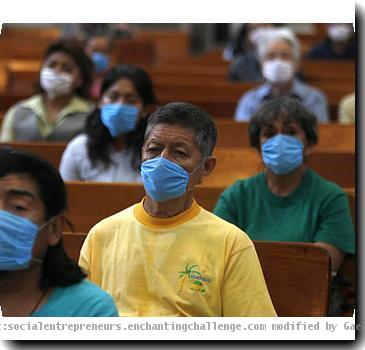Saudi health minister says 5 die from swine flu during annual hajj
By APSunday, November 29, 2009
Saudi official: 5 dead from swine flu at hajj
MINA, Saudi Arabia — Five people died from swine flu during the hajj, Saudi Arabia said Sunday, a relatively small number considering the event is the largest annual gathering in the world and is seen as an ideal incubator for the virus.
But some experts warned the true extent of the virus will not be known until pilgrims return to their home countries around the world.
Speaking on the final day of the Islamic pilgrimage, Abdullah al-Rabeeah said authorities recorded 73 cases — including the five deaths — of H1N1, commonly known as swine flu. He said only 10 percent of the some 2.5 million pilgrims were vaccinated against the virus.
“Our safety precautions have secured a very successful and safe hajj for pilgrims from around the world with no infectious disease outbreaks,” al-Rabeeah said.
Saudi officials, along with American and international health experts, worked to curb any outbreak during the hajj. Health officials circulated among the sprawling tent camp at Mina where the pilgrims lived and gave the faithful cheek swabs for testing later. They also placed hand sanitizer dispensers on walls in the camps, near public bathrooms and at ritual sites, while pilgrims arriving at Saudi airports were scanned using a thermal camera and offered a free vaccine.
But authorities also are using the pilgrimage as a test case to build a database, watch for mutations and look for lessons on controlling the flu at other large gatherings like the 2010 soccer World Cup in South Africa.
Despite the relatively minor impact of the virus during the hajj, some experts warn there could be cases reported among pilgrims when they return home.
Al-Rabeeah brushed aside such concerns Sunday, saying some pilgrims have been in the country for almost a month, far longer than the weeklong incubation period.
“They’ve had enough time to show symptoms of swine flu, and that hasn’t happened,” he said.
But he also stressed Saudi authorities will continue to monitor pilgrims until they leave the country, and urged other countries monitor the pilgrims upon their return home.
On Sunday, Muslim pilgrims performed the hajj’s final ritual at the cube-shaped Kaaba — Islam’s holiest shrine.
After three days of throwing stones at walls in the desert valley of Mina in a symbolic rejection of Satan’s temptation, millions of pilgrims crammed into buses and trucks for the short trip back to Mecca to circle the Kaaba, marking the traditional end of the hajj.
Many of the men making the pilgrimage had shed their traditional white robes in favor of Western clothing. Many had shaved heads, done on the first day of stoning as a symbol of renewal.
The Muslims believe that they are cleared of all sins if they perform a sincere pilgrimage.
A total of 2.5 million pilgrims attended the hajj this year, the governor of the Mecca region, Prince Khaled Al-Faisal, told a news conference, according to the state-run SPA news agency.
Saudi officials earlier had said they expected this year’s attendance to be higher than last year’s 3 million. But for days, there have been reports that real attendance was lower because of swine flu fears, and Saudi Arabia had recommended that the elderly and very young not come because they are more vulnerable to the virus.

